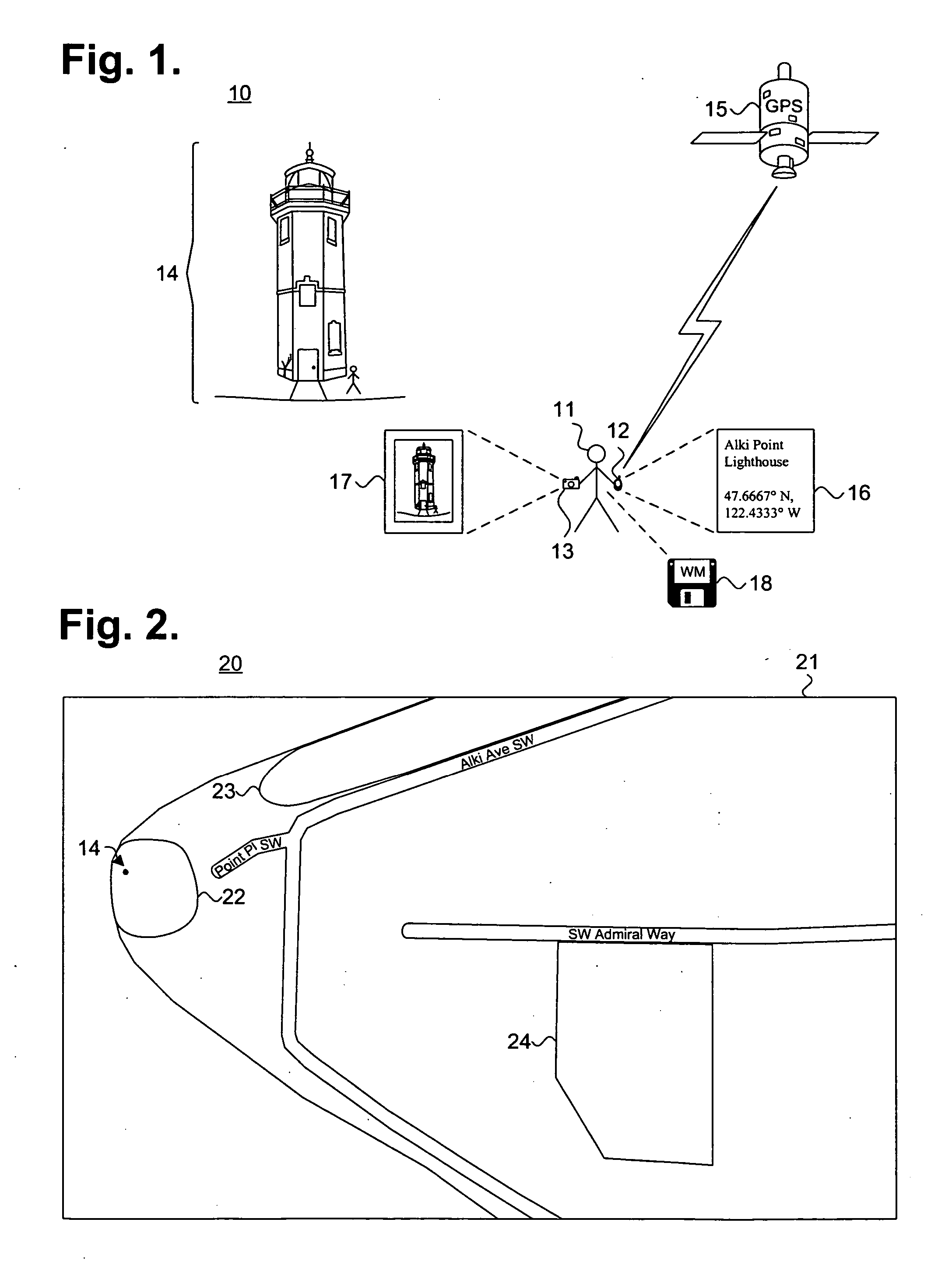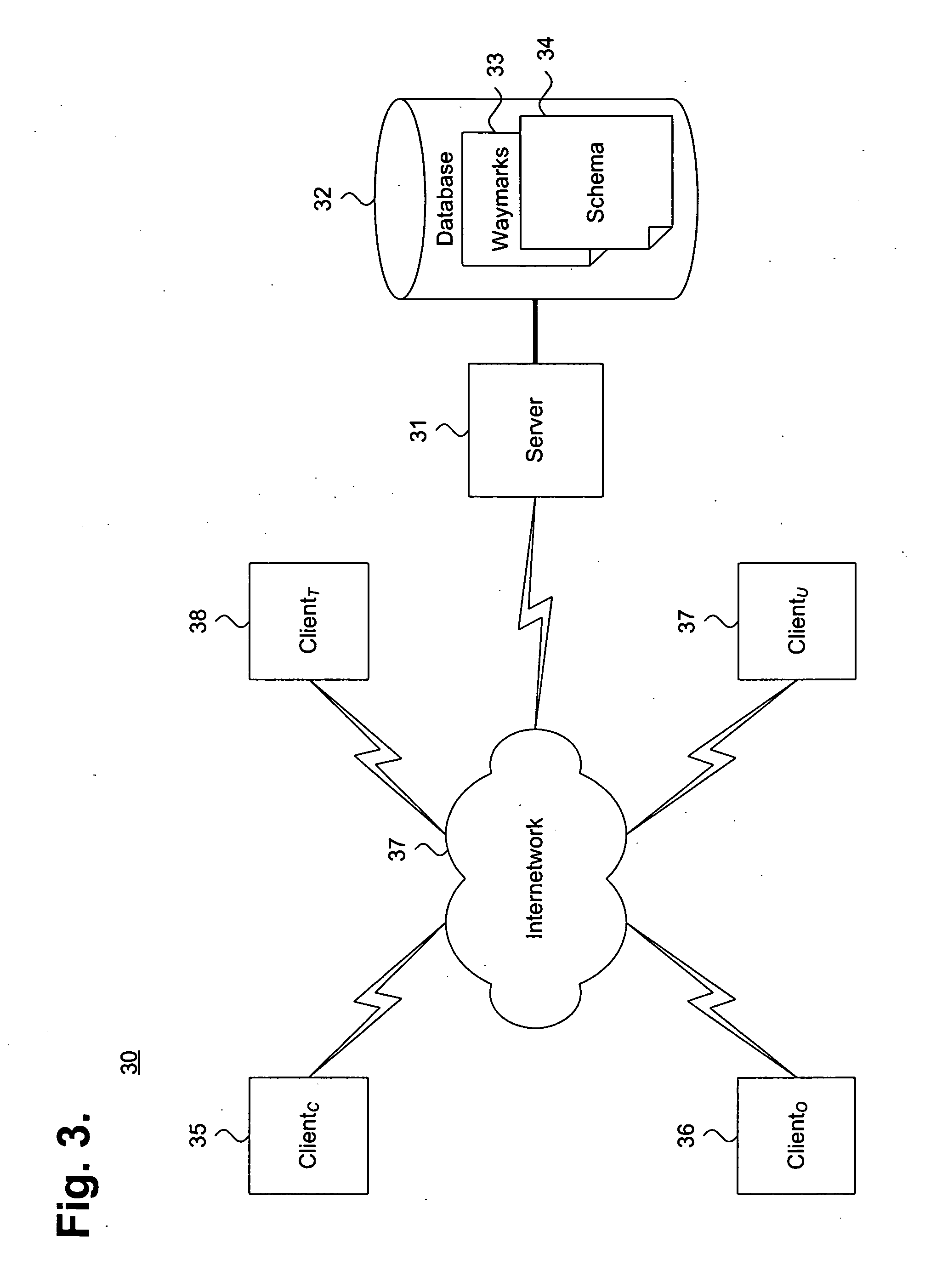System and method for facilitating ad hoc compilation of geospatial data for on-line collaboration
a geospatial data and ad hoc technology, applied in the field of online data collaboration, can solve the problems of inability to share personalized travel information, information may not be of the type or caliber sought, and esoteric information is rar
- Summary
- Abstract
- Description
- Claims
- Application Information
AI Technical Summary
Benefits of technology
Problems solved by technology
Method used
Image
Examples
example web pages
[0044] A standardized Web-based user interface allows on-line clients 35, 36, 37 that are executing Web browsers to manage, navigate, and search the waymarks. FIG. 8 is a screen shot 80 showing, by way of example, a Web page 81 for navigating a set of directories 82 of waymarks 44. To facilitate navigation in an outline format, the set of directories 82 are presented as links to Web pages of individual categories. In addition, the set of directories presented can be refined by applying a filter 83 to limit scope.
[0045] A creator 61 can edit their own categories. FIG. 9 is a screen shot 90 showing, by way of example, a Web page 91 for editing a category 92 of waymarks. The creator 61 can edit the category to modify the properties that are displayed to waymark owners 62 and users 63. Other options 93 could be available, for instance, to add variables, manage the category, transfer ownership, and view variables.
[0046] Similarly, a creator 61 can manage the variables currently defined...
PUM
 Login to View More
Login to View More Abstract
Description
Claims
Application Information
 Login to View More
Login to View More - R&D
- Intellectual Property
- Life Sciences
- Materials
- Tech Scout
- Unparalleled Data Quality
- Higher Quality Content
- 60% Fewer Hallucinations
Browse by: Latest US Patents, China's latest patents, Technical Efficacy Thesaurus, Application Domain, Technology Topic, Popular Technical Reports.
© 2025 PatSnap. All rights reserved.Legal|Privacy policy|Modern Slavery Act Transparency Statement|Sitemap|About US| Contact US: help@patsnap.com



